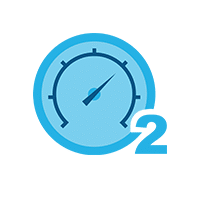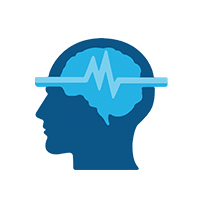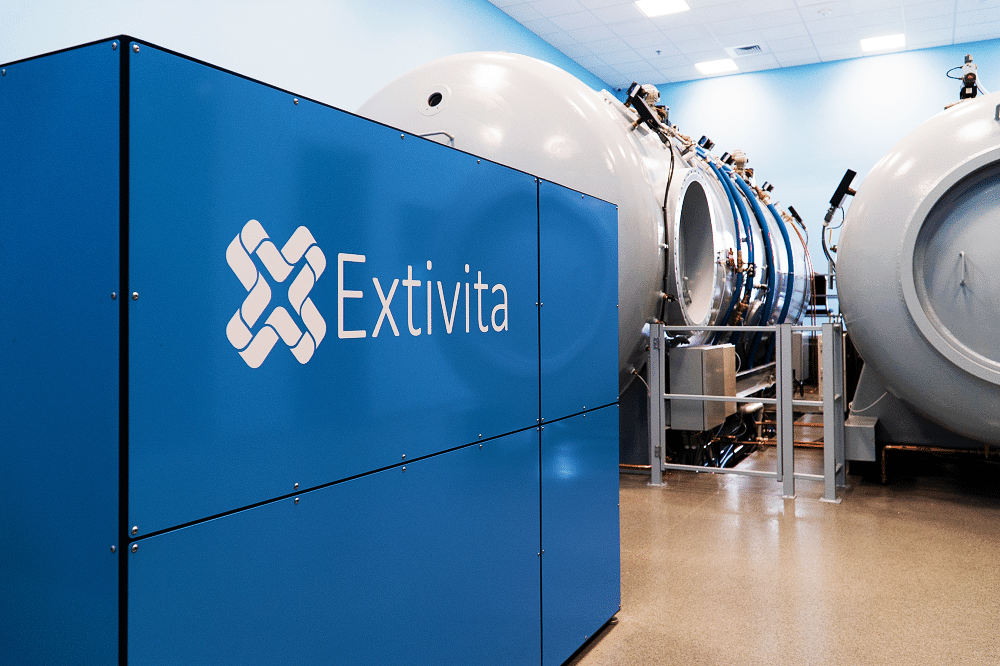Sudden Sensorineural Hearing Loss (SSNHL)
At Extivita, we believe that integrative medicine offers powerful support in the recovery process for complex conditions like Sudden Sensorineural Hearing Loss (SSNHL). By addressing both the root causes and systemic imbalances that contribute to hearing loss—such as inflammation, oxidative stress, and impaired circulation—our therapies are designed to enhance the body’s natural healing capabilities.
Each treatment offered at our clinic is grounded in scientific evidence and guided by clinical research. From increasing oxygen delivery with Hyperbaric Oxygen Therapy (HBOT) to reducing cellular damage with antioxidant IV infusions and promoting nerve repair through PEMF therapy, our approach is both comprehensive and personalized. Our goal is to provide effective, research-driven therapies that support recovery and optimize long-term hearing health.
What is Sudden Sensorineural Hearing Loss?
Sudden Sensorineural Hearing Loss (SSNHL) is a rapid, unexplained loss of hearing that usually occurs in one ear, either instantly or over the course of a few days. It is considered a medical emergency and should be addressed immediately for the best chance of recovery. SSNHL may result from viral infections, inflammation, circulatory disruption, or nerve damage within the inner ear.
At Extivita, we take a holistic and integrative approach to treating SSNHL. Our therapies are designed not only to restore oxygen and nutrient delivery to the auditory system, but also to reduce inflammation, support nerve regeneration, and enhance overall neurological health. By combining integrative therapies, we target the underlying physiological disruptions that contribute to SSNHL — improving your chances of hearing recovery and long-term auditory function.
Extivita Therapies For SSNHL

Hyperbaric Oxygen Therapy

Neurofeedback

Infrared Sauna

Nutritional IV Therapy

Pulsed Electromagnetic Field Therapy
Hyperbaric Oxygen Therapy (HBOT)
Hyperbaric Oxygen Therapy (HBOT) is a safe, non-invasive therapy that involves breathing 100% medical-grade oxygen in a pressurized chamber. Under increased atmospheric pressure—typically around 2.0 ATA—your lungs absorb significantly more oxygen than at normal air pressure.
This elevated oxygen level saturates your plasma and is delivered throughout the body, even to areas with poor circulation, inflammation, or tissue injury. HBOT supports the body’s natural healing processes by enhancing oxygen delivery, reducing inflammation, and helping promote tissue repair.
HBOT Supports Recovery from SSNHL
Sudden Sensorineural Hearing Loss (SSNHL) often involves an abrupt disruption of blood flow or inflammation in the cochlea or auditory nerve, both of which are highly sensitive to oxygen deprivation. The inner ear, particularly the cochlea’s delicate hair cells responsible for detecting sound vibrations, relies heavily on adequate oxygen supply, and any restriction in blood flow can lead to cellular damage and impaired hearing. Hypoxia in these tissues may result from viral infection, vascular occlusion, autoimmune response, or oxidative stress. HBOT combats these pathologies through several key mechanisms:
Increasing Oxygen Availabilty
Increases Oxygen Diffusion to ischemic areas of the inner ear and auditory nerve, promoting tissue survival and function.

Reducing Inflammation
Reduces Inflammation and Edema by modulating cytokine activity and decreasing pro-inflammatory markers.
Supporting Repair Processes
Promotes Angiogenesis and Neurogenesis, supporting nerve repair and cochlear function.

Protecting Vulnerable Cells
Inhibits Apoptosis (cell death) in oxygen-starved inner ear cells.
Neurofeedback Therapy
Neurofeedback is a non-invasive therapy that helps train the brain to regulate itself by providing real-time feedback on brainwave activity. Using EEG technology, this therapy monitors brainwave patterns and uses visual or auditory cues to gently guide the brain into more balanced and functional states.
At Extivita, neurofeedback is used to support cognitive clarity, emotional regulation, and neurological balance—particularly helpful for patients experiencing stress-related nervous system disruption.
How Neurofeedback May Support Individuals with SSNHL
Sudden Sensorineural Hearing Loss (SSNHL) can be linked to stress, nervous system dysregulation, or impaired communication between auditory pathways and the brain. Neurofeedback therapy may support recovery and adaptation by:
- Promoting Nervous System Regulation: Helping calm overactive stress responses, which may contribute to inner ear dysfunction in some cases.
- Supporting Auditory Processing: Encouraging balanced brainwave activity in regions that help interpret sound, particularly after sudden changes in hearing.
- Reducing Cognitive Overload: Enhancing focus, reducing mental fatigue, and supporting clearer thinking, which can be disrupted during hearing loss episodes.
- Improving Emotional Resilience: Supporting mood stability and reducing anxiety, which often co-occur with SSNHL.
Nutritional IV Therapy
Nutritional IV Therapy involves the direct infusion of essential vitamins, minerals, and antioxidants into the bloodstream, bypassing the gastrointestinal system and allowing for rapid cellular uptake. This method is especially useful in addressing deficiencies and oxidative stress—both of which are implicated in the pathogenesis of Sudden Sensorineural Hearing Loss (SSNHL).
SSNHL often involves oxidative damage, inflammatory responses, and impaired circulation to the inner ear.Nutritional IVs can help mitigate these issues by supporting nerve repair, improving vascular health, and reducing inflammation.
Key IV Recommendations for SSNHL
Myers’ Cocktail IV
Components: Magnesium, Calcium, B-complex vitamins, and Vitamin C
Why It’s Recommended:
- Magnesium plays a crucial role in protecting cochlear hair cells from excitotoxicity and calcium overload—mechanisms commonly seen in SSNHL, especially in cases involving noise trauma or ischemia.
- B-complex vitamins aid in nerve regeneration and support myelin sheath repair around the auditory nerve.
- Vitamin C and Calcium contribute to antioxidant defense and metabolic support.
High-Dose Vitamin C IV
Components: Ascorbic Acid (Vitamin C in therapeutic doses starting at 15g)
Why It’s Recommended:
- Vitamin C is a potent antioxidant that reduces reactive oxygen species (ROS) in the cochlea and enhances vascular function.
- Vitamin C supports the immune system, which is valuable if SSNHL is triggered by viral infections.
Glutathione IV
Components: Reduced Glutathione
Why It’s Recommended:
- Glutathione is the body’s master antioxidant and is critical for detoxification and protection of delicate tissues, including those in the inner ear.
- Glutathione neutralizes free radicals that can damage auditory hair cells and neurons.
NAD+ Trio IV
Components: NAD+, Myers’ Cocktail, Reduced Glutathione
Why It’s Recommended:
- The NAD+ Trio IV is a powerful, all-in-one IV therapy option that combines the neuroprotective and cellular benefits of NAD+, the broad nutrient support of the Myers Cocktail, and the detoxifying power of Glutathione.
- NAD+ supports mitochondrial function and cellular repair, particularly important in the auditory system where sudden damage may impair nerve signaling.
Infrared Sauna Therapy
Infrared sauna therapy uses gentle, deep-penetrating heat to warm body tissues, stimulate circulation, and promote relaxation. This increase in blood flow may help reduce systemic inflammation and enhance the delivery of oxygen and nutrients throughout the body.
How Infrared Sauna May Support Individuals with SSNHL
In Sudden Sensorineural Hearing Loss (SSNHL), maintaining inner ear circulation and reducing inflammation are both important considerations. Infrared sauna therapy may support individuals experiencing SSNHL by:
- Enhancing Circulation: Promoting blood flow that supports the delivery of oxygen and nutrients to the cochlea and surrounding auditory structures.
- Reducing Inflammatory Load: Assisting in the regulation of systemic inflammation, which may influence auditory health.
- Supporting Detoxification: Encouraging the elimination of environmental toxins and oxidative stressors that can impact cellular health.
Pulsed Electromagnetic Field (PEMF) Therapy
PEMF therapy uses low-frequency, pulsed electromagnetic fields to stimulate the body’s natural cellular activity. These pulses penetrate deep into tissues, supporting nutrient exchange, waste removal, and the function of mitochondria—your cells’ energy producers.
This gentle stimulation may promote circulation, reduce inflammation, and support cellular recovery. While PEMF is FDA-approved for specific applications such as non-healing bone fractures, it is also being explored as a complementary therapy for wellness and tissue support in other areas of the body.
How PEMF Therapy May Support Individuals with SSNHL
Sudden Sensorineural Hearing Loss (SSNHL) can involve impaired circulation or cellular stress in the auditory system. PEMF therapy may help support the body’s healing response through:
- Improved Microcirculation: Encouraging better blood flow to the cochlea and auditory nerve, which may enhance oxygen and nutrient delivery.
- Support for Cellular Energy Production: Increasing mitochondrial function (ATP production), which may assist stressed or injured cells in recovery.
- Nerve and Tissue Support: Creating an environment that promotes nerve health and tissue resilience, including in sensitive areas of the auditory system.
Medical Disclaimer
The therapies mentioned on this page are not FDA-approved for the treatment of Sudden Sensorineural Hearing Loss (SSNHL) and are considered complementary. This information is educational and not intended to replace medical advice. Individual results may vary.
Resources
- MedStar Health. “Hyperbaric Oxygen Therapy.” Accessed 27 May 2025. https://www.medstarhealth.org/news-and-publications/articles-and-research-reports/hyperbaric-oxygen-therapy
- National Center for Biotechnology Information. “Sudden Sensorineural Hearing Loss (SSNHL).” PubMed Central, PMC8855894. Accessed 27 May 2025. https://pmc.ncbi.nlm.nih.gov/articles/PMC8855894
- Reuter, Bernd. “Hyperbaric Oxygenation in Otolaryngology.” Handbook of Hyperbaric Medicine, Springer, 2018. https://link.springer.com/chapter/10.1007/978-3-319-92507-3_4
- PubMed Central. “Mechanisms of Hyperbaric Oxygen Therapy.” PMC11257184. Accessed 27 May 2025. https://pmc.ncbi.nlm.nih.gov/articles/PMC11257184
- PubMed Central. “Effects of HBOT on Cytokine Activity.” PMC8394403. Accessed 27 May 2025. https://pmc.ncbi.nlm.nih.gov/articles/PMC8394403
- “Angiogenesis.” NCBI Bookshelf. Accessed 27 May 2025. https://www.ncbi.nlm.nih.gov/books/NBK482485/
- PubMed Central. “HBOT and Neurogenesis.” PMC11235151. Accessed 27 May 2025. https://pmc.ncbi.nlm.nih.gov/articles/PMC11235151
- “Tissue Hypoxia.” NCBI Bookshelf. Accessed 27 May 2025. https://www.ncbi.nlm.nih.gov/books/NBK513221
- PubMed. “Sensorineural Hearing Loss and Oxidative Stress.” PMID: 38673731. Accessed 27 May 2025. https://pubmed.ncbi.nlm.nih.gov/38673731
- PubMed Central. “Pathogenesis of SSNHL.” PMC9653771. Accessed 27 May 2025. https://pmc.ncbi.nlm.nih.gov/articles/PMC9653771
- “Magnesium.” NCBI Bookshelf. Accessed 27 May 2025. https://www.ncbi.nlm.nih.gov/books/NBK507266/
- PubMed Central. “B-Vitamins and Nerve Conduction.” PMC8294980. Accessed 27 May 2025. https://pmc.ncbi.nlm.nih.gov/articles/PMC8294980
- PubMed Central. “Vitamin C and Auditory Health.” PMC7359392. Accessed 27 May 2025. https://pmc.ncbi.nlm.nih.gov/articles/PMC7359392
- Wang, Yan, et al. “Antioxidants and Heavy Metal Exposure.” Environmental Research, vol. 177, 2019. https://www.sciencedirect.com/science/article/abs/pii/S0013935119300490
- PubMed. “High-Dose Vitamin C for Hearing Recovery.” PMID: 23208525. Accessed 27 May 2025. https://pubmed.ncbi.nlm.nih.gov/23208525
- PubMed Central. “Vitamin C in Immunity.” PMC5707683. Accessed 27 May 2025. https://pmc.ncbi.nlm.nih.gov/articles/PMC5707683
- ScienceDirect. “Glutathione and Free Radical Defense.” Biochemical and Biophysical Research Communications, vol. 240, no. 2, 1997. https://www.sciencedirect.com/science/article/abs/pii/S0006899397011566
- Thieme Medical Publishers. “Glutathione in Auditory Protection.” International Tinnitus Journal, vol. 25, 2021. https://www.thieme-connect.com/products/ejournals/pdf/10.1055/s-0041-1724220.pdf
- PubMed Central. “NAD+ and Mitochondrial Health.” PMC9512238. Accessed 27 May 2025. https://pmc.ncbi.nlm.nih.gov/articles/PMC9512238
- PubMed Central. “Far-Infrared Sauna and Circulation.” PMC4935255. Accessed 27 May 2025. https://pmc.ncbi.nlm.nih.gov/articles/PMC4935255
- Sung, Kyu, et al. “Inflammatory Responses to FIR Therapy.” European Journal of Epidemiology, vol. 33, no. 2, 2017. https://link.springer.com/article/10.1007/s10654-017-0335-y
- PubMed. “Detoxification and Thermal Therapy.” PMID: 21057782. Accessed 27 May 2025. https://pubmed.ncbi.nlm.nih.gov/21057782/
- PubMed. “PEMF Therapy Overview.” PMID: 39355761. Accessed 27 May 2025. https://pubmed.ncbi.nlm.nih.gov/39355761
- Dreben, Shawn. “PEMF White Paper.” Accessed 27 May 2025. https://shawndreben.com/wp-content/uploads/2021/01/PEMF.pdf
- PEMF Australia. “PEMF and ATP Production.” Accessed 27 May 2025. https://pemf.com.au/blog/pemf-increases-energy-and-atp-production
- Wellness Center of Plymouth. “Role of PEMF in Regenerative Medicine.” Accessed 27 May 2025. https://wellnesscenterofplymouth.com/the-role-of-pemf-therapy-in-regenerative-medicine-healing-injuries-and-promoting-tissue-repair

